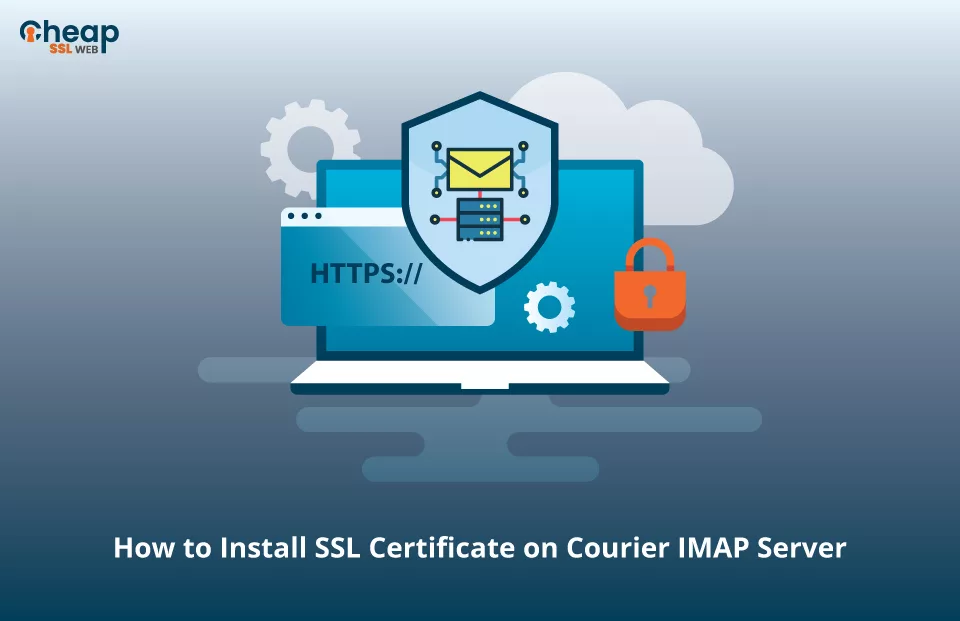How to Install SSL Certificate on Courier IMAP Server?

Comprehensive Guide to Safeguarding the Courier IMAP Server with an SSL Certificate
If you want to install an SSL certificate on your Courier IMAP server but lack the necessary expertise, this article is for you. We have carefully divided this article into three sections to ensure clarity: “How to Create a Certificate Signing Request (CSR)?” “How to Install an SSL Certificate on Courier IMAP Server?” – the main topic, and “Where to Purchase SSL Certs Specifically Designed for Securing IMAP?”
How to Create a Code Signing Request (CSR)?
CSR is an encoded text that holds crucial details about your domain and organization. You have two distinct options to create a CSR for your IMAP server, each with its own unique advantages:
- Use our CSR Generation tool – Which automates the CSR and private key creation process.
- Do it manually – More control over the whole process, but it’s tricky and time-consuming.
Choose the strategy that suits your preferences and requirements, whether it’s the efficiency of our automated CSR Generator or the hands-on control of manual CSR generation. Once the CSR is ready, submit it to the CA for validation.
How to Install SSL Certificate on Courier IMAP Server?
Follow the steps given below to install the SSL cert on the IMAP server:
Step 1: Copy the .zip folder Content
Once the CA verifies your CSR, they will send your SSL certificate and additional files required for the installation process to your registered mail in a .zip folder.
- Unzip the .zip folder.
- Copy all of the certificate files into your local environment.
- Make sure you have –
- .crt file (main certificate file)
- .ca-bundle file (intermediate certificates)
- Private Key File
Step 2: Merge Main Certificate File and the Primary Key
- Open the .crt file using a text editor, like Notepad. (Note_1)
- Open the private key file in a different Notepad. (Note _2)
- Open a new Notepad. (Note_3)
- Copy all the content of Note_1 into Note_3.
- Copy all the content of Note_2 into Note_3 without giving any space in between.
- Save the Note 3 with the .pem extension. (Note_3.pem)
Step 3: Import the Certificate
- Open IMPAD-SSL file. (Typically, found at – /usr/lib /courier-imap/etc/)
- Add these commands to the file:
- TLS_CERTFILE=/some/path/Note_3.pem
- TLS_TRUSTCERTS=/some/path/intermediate.txt
- Verify the underneath cmd that allows the SSL3 version:
- TLS_PROTOCOL=SSL3
- Open POP3D-SSL file. (Commonly located at – /usr/lib/courier-imap/etc/)
- Add these two commands in the POP3D-SSL file:
- TLS_CERTFILE=/some/path/Note_3.pem
- TLS_TRUSTCERTS=/some/path/Intermediace_Cert.txt
Step 4: Restart the Server
Ensure that the file “Note_3.pem” has restricted readability and is accessible exclusively to the root user. Once you have secured the file permissions, proceed to restart the Courier IMAP server.
Congratulations, you have accomplished the installation procedure.
Test the SSL Certificate Installation
To confirm that the SSL certificate on your Cerberus FTP Server has been deployed successfully, you can rely on SSL testing tools like SSL Checker. This dedicated tool is specifically designed to efficiently identify any vulnerabilities or potential errors in your SSL setup. Utilizing SSL Checker, you can acquire an explicit and detailed report that provides comprehensive insights into any issues that may impact and influence your SSL configuration.

